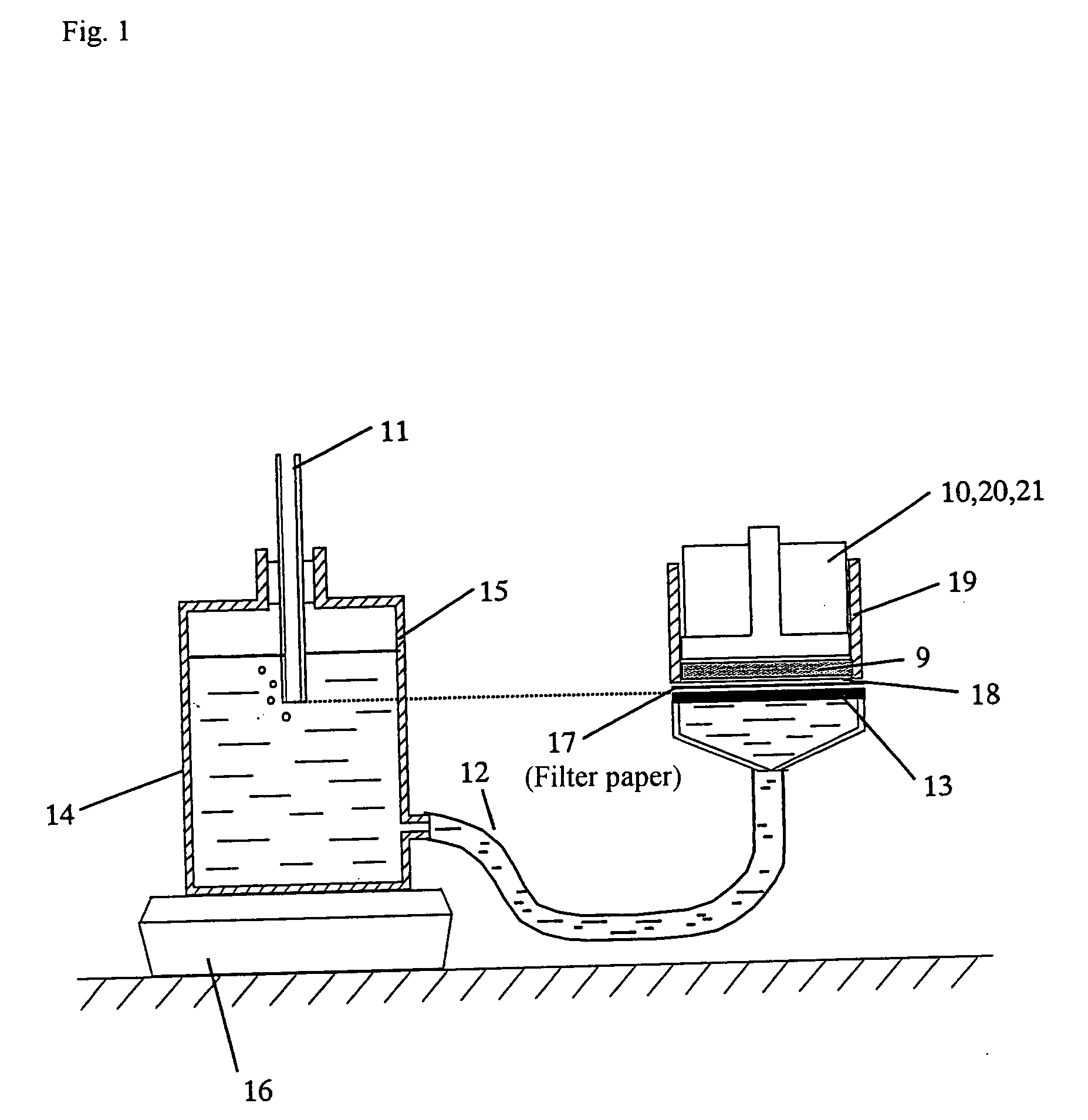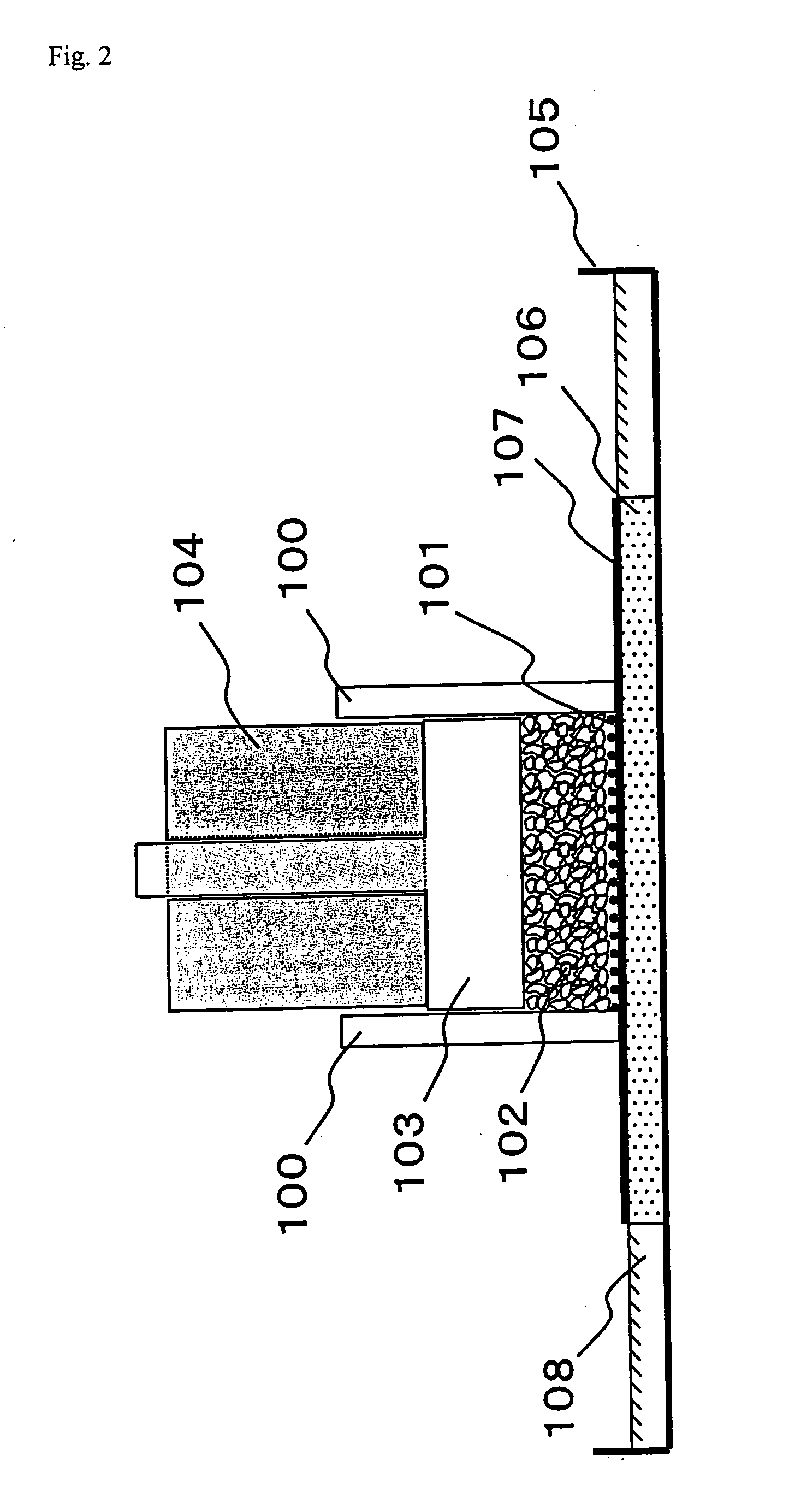Vater-absorbent resin composition and its production process
a technology of vater-absorbent resin and resin composition, which is applied in the direction of non-fibrous pulp addition, other chemical processes, bandages, etc., can solve the problems of unfavorable deterioration of absorption capacity without load and absorption capacity under load, deterioration of insufficient effect of enhancing liquid permeability and liquid diffusibility to a degree, etc., to achieve excellent liquid permeability and liquid performance performance performance a water absorption and production process of vater-absorption and vater-absorption and vater-absorption and vater-absorption and vater-absorption and water-absorption and water-absorption and water-absorption and production process of water-absorption and production process of water-absorption and production process, which is applied in the field of water-absorption resin composition and production process, which is applied in the field of water-absorption performance performance performance, absorption performance performan
- Summary
- Abstract
- Description
- Claims
- Application Information
AI Technical Summary
Benefits of technology
Problems solved by technology
Method used
Image
Examples
referential example 1
[0352] In a reactor as prepared by lidding a jacketed stainless twin-arm kneader of 10 liters in capacity having two sigma-type blades, there was prepared a reaction liquid by dissolving 11.7 g (0.10 mol %) of polyethylene glycol diacrylate into 5,438 g of aqueous solution of sodium acrylate having a neutralization degree of 71.3 mol % (monomer concentration: 39 mass %). Next, this reaction liquid was deaerated under an atmosphere of nitrogen gas for 30 minutes. Subsequently, 29.34 g of 10 mass % aqueous sodium persulfate solution and 24.45 g of 0.1 mass % aqueous L-ascorbic acid solution were added thereto under stirred conditions. As a result, polymerization started after about 1 minute. Then, the polymerization was carried out in the range of 20 to 95° C. while the forming gel was pulverized. Then, the resultant crosslinked hydrogel polymer was taken out after 30 minutes from the start of the polymerization. The crosslinked hydrogel polymer as obtained above was in the form of fi...
referential example 2
[0362] An amount of 100 g of the water-absorbent resin (C) as obtained from the aforementioned Referential Example 1 was mixed with a surface-treating agent comprising a mixed liquid of 0.5 g of 1,4-butanediol, 1.0 g of propylene glycol, and 3.0 g of pure water, and then the resultant mixture was heat-treated at 210° C. for 30 minutes. Furthermore, the resultant particles were disintegrated to such a degree that they could pass through a JIS standard sieve having a mesh opening size of 600 μm. As a result, a surface-crosslink-treated water-absorbent resin (C1) was obtained.
[0363] The results of having measured the properties of the water-absorbent resin (C1) are shown in Table 1.
referential example 3
[0364] An amount of 100 g of the water-absorbent resin (A) as obtained from the aforementioned Referential Example 1 was mixed with a surface-treating agent comprising a mixed liquid of 0.1 g of 2-ethyloxetane, 3.0 g of pure water, and 0.3 g of 24 mass % aqueous sodium hydroxide solution, and then the resultant mixture was heat-treated at 200° C. for 30 minutes. Furthermore, the resultant particles were disintegrated to such a degree that they could pass through a JIS standard sieve having a mesh opening size of 850 μm. As a result, a surface-crosslink-treated water-absorbent resin (A1) was obtained.
[0365] The results of having measured the properties of the water-absorbent resin (A1) are shown in Table 1.
PUM
| Property | Measurement | Unit |
|---|---|---|
| Temperature | aaaaa | aaaaa |
| Fraction | aaaaa | aaaaa |
| Fraction | aaaaa | aaaaa |
Abstract
Description
Claims
Application Information
 Login to View More
Login to View More - R&D
- Intellectual Property
- Life Sciences
- Materials
- Tech Scout
- Unparalleled Data Quality
- Higher Quality Content
- 60% Fewer Hallucinations
Browse by: Latest US Patents, China's latest patents, Technical Efficacy Thesaurus, Application Domain, Technology Topic, Popular Technical Reports.
© 2025 PatSnap. All rights reserved.Legal|Privacy policy|Modern Slavery Act Transparency Statement|Sitemap|About US| Contact US: help@patsnap.com



